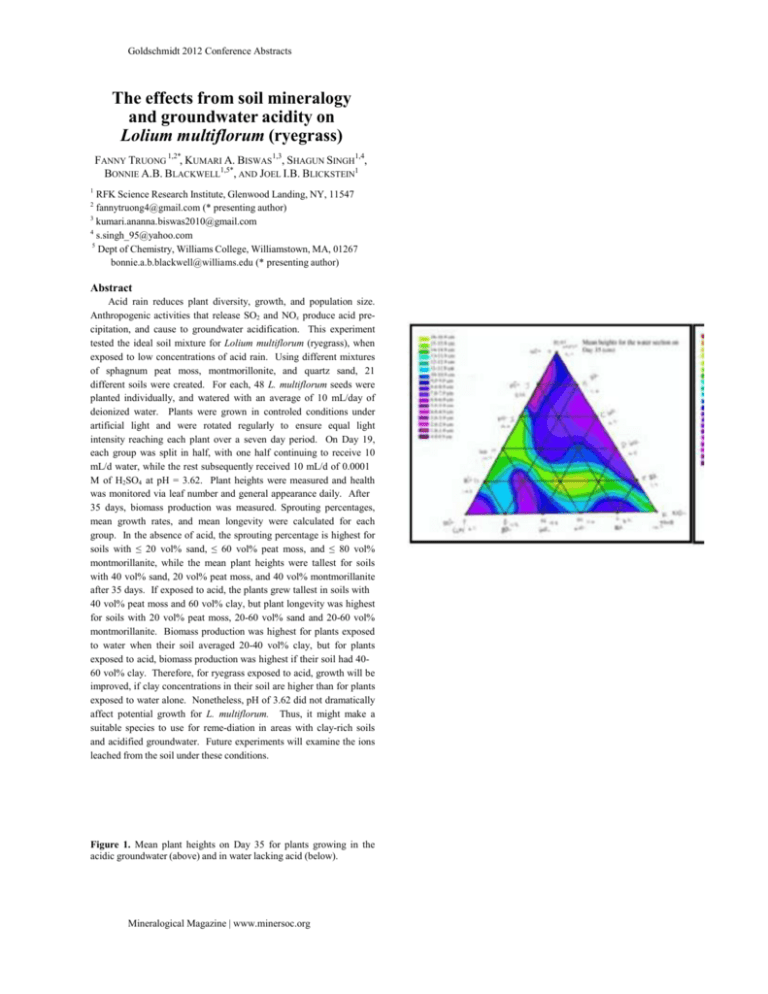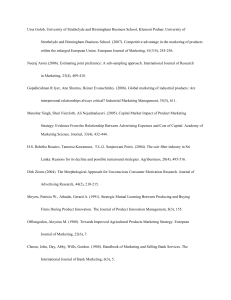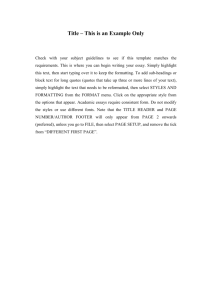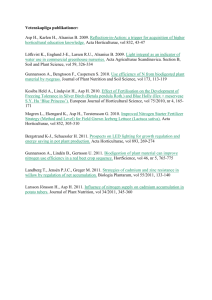Material properties and microstructure from
advertisement

Goldschmidt 2012 Conference Abstracts The effects from soil mineralogy and groundwater acidity on Lolium multiflorum (ryegrass) FANNY TRUONG 1,2*, KUMARI A. BISWAS1,3, SHAGUN SINGH1,4, BONNIE A.B. BLACKWELL1,5*, AND JOEL I.B. BLICKSTEIN1 1 RFK Science Research Institute, Glenwood Landing, NY, 11547 fannytruong4@gmail.com (* presenting author) 3 kumari.ananna.biswas2010@gmail.com 4 s.singh_95@yahoo.com 5 Dept of Chemistry, Williams College, Williamstown, MA, 01267 bonnie.a.b.blackwell@williams.edu (* presenting author) 2 Abstract Acid rain reduces plant diversity, growth, and population size. Anthropogenic activities that release SO2 and NOx produce acid precipitation, and cause to groundwater acidification. This experiment tested the ideal soil mixture for Lolium multiflorum (ryegrass), when exposed to low concentrations of acid rain. Using different mixtures of sphagnum peat moss, montmorillonite, and quartz sand, 21 different soils were created. For each, 48 L. multiflorum seeds were planted individually, and watered with an average of 10 mL/day of deionized water. Plants were grown in controled conditions under artificial light and were rotated regularly to ensure equal light intensity reaching each plant over a seven day period. On Day 19, each group was split in half, with one half continuing to receive 10 mL/d water, while the rest subsequently received 10 mL/d of 0.0001 M of H2SO4 at pH = 3.62. Plant heights were measured and health was monitored via leaf number and general appearance daily. After 35 days, biomass production was measured. Sprouting percentages, mean growth rates, and mean longevity were calculated for each group. In the absence of acid, the sprouting percentage is highest for soils with ≤ 20 vol% sand, ≤ 60 vol% peat moss, and ≤ 80 vol% montmorillanite, while the mean plant heights were tallest for soils with 40 vol% sand, 20 vol% peat moss, and 40 vol% montmorillanite after 35 days. If exposed to acid, the plants grew tallest in soils with 40 vol% peat moss and 60 vol% clay, but plant longevity was highest for soils with 20 vol% peat moss, 20-60 vol% sand and 20-60 vol% montmorillanite. Biomass production was highest for plants exposed to water when their soil averaged 20-40 vol% clay, but for plants exposed to acid, biomass production was highest if their soil had 4060 vol% clay. Therefore, for ryegrass exposed to acid, growth will be improved, if clay concentrations in their soil are higher than for plants exposed to water alone. Nonetheless, pH of 3.62 did not dramatically affect potential growth for L. multiflorum. Thus, it might make a suitable species to use for reme-diation in areas with clay-rich soils and acidified groundwater. Future experiments will examine the ions leached from the soil under these conditions. Figure 1. Mean plant heights on Day 35 for plants growing in the acidic groundwater (above) and in water lacking acid (below). Mineralogical Magazine | www.minersoc.org






